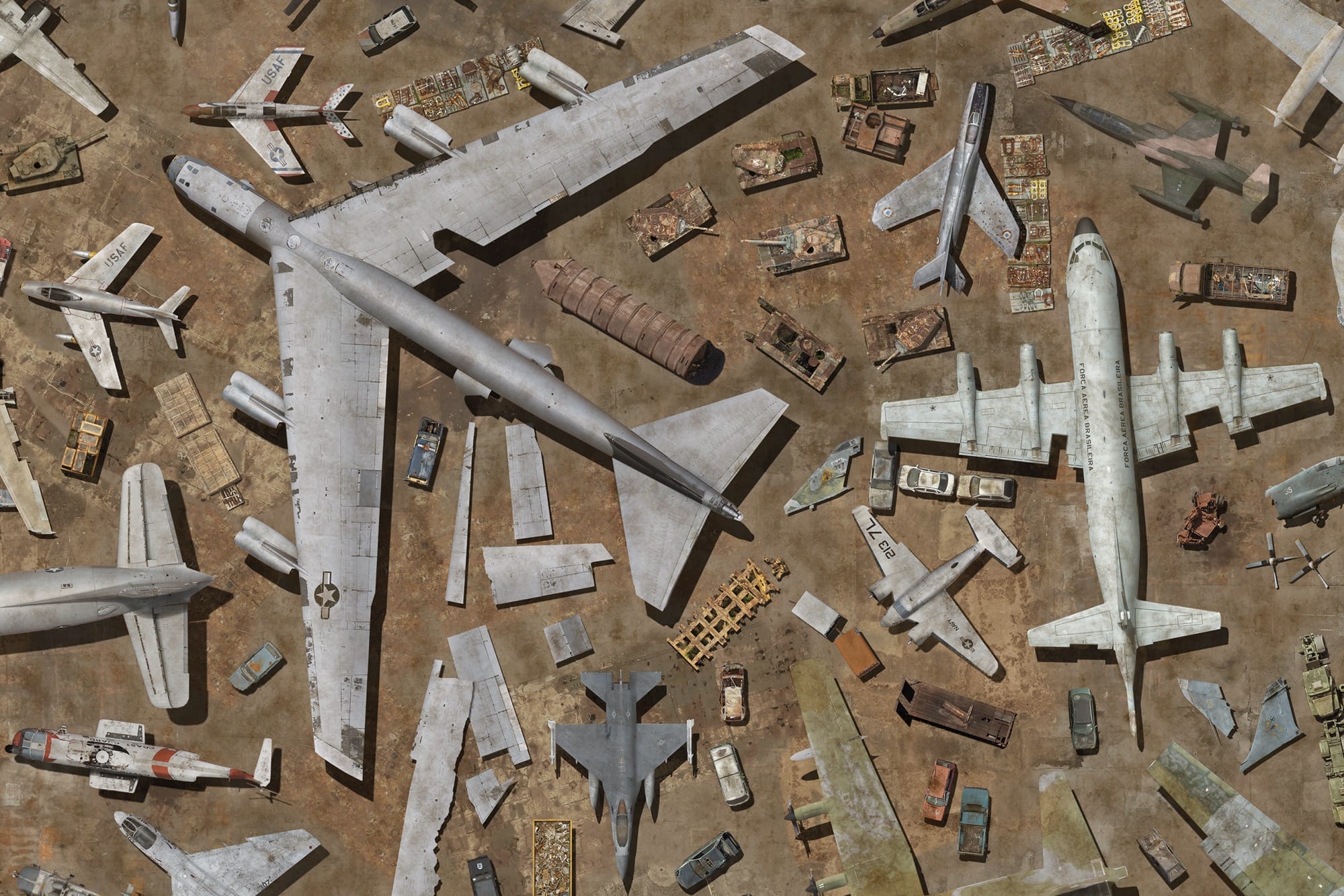This post was originally published on Colossal
Where do jets go when they no longer fly? What happens to shipping containers when they aren’t useful anymore for cargo? The answer is invisible to most of us, but for Cássio Vasconcellos, abandoned trains, planes, and automobiles are far from forgotten.
For more than four decades, the São Paolo-based artist has been fascinated by the relationship between humans and the landscape. Over the years, his work has captured dramatic impressions of sprawling cities around the globe, often from the air, spurring an ongoing series called Collectives that condenses details of urban infrastructure like highways and parking lots into sprawling, all-over compositions.

Collectives 2, to which these images belong, focuses solely on the mesmerizing—and mind-boggling—quantity of scrapped vehicles and metal indefinitely parked in nondescript places. Vasconcellos draws from tens of thousands of aerial photographs he has made of junkyards, scrap heaps, airplane graveyards, and dumps to create remarkable, large-scale composite images.
The artist has mapped all of the junkyards around São Paolo, plus numerous more near the Brazilian cities of Cubatão, Santos, and Rio de Janeiro. He has also documented desert landscapes in the U.S. that serve as final resting places for commercial airliners and military jets.
“Over,” for example, considers numerous associated meanings, like “overview,” “all-over,” “overdose,” or “game over.” The title references not only excess but the overflow of visual information in contemporary society.
“Seeing an image like this is to make clear that there is no ‘throw away,’” Vasconcellos says in a video about “OVER,” which took him about a year and three months to complete. “This volume of things that are in the work… they are out there,” he adds. “I just put them together.”

“These photos may look like post-apocalyptic scenarios, but they could be our future,” the artist says in a statement. “We still have to learn that by throwing things away and taking them out of our sight, we don’t make them
disappear. In fact, they keep existing somewhere else, outliving us most
of the time.”
Vasconcellos cuts out individual shipping containers, trucks, dumpsters, and piles of detritus in a meticulous and time-consuming digital process. He never repeats an element in a composition, and each piece is scaled and situated so that the shadows align with the directionality of the light. He then adds dust and dirt to the surfaces, simultaneously emphasizing the patina of time and an eerie sense of timelessness.
Devoid of people, Vasconcellos’s images nevertheless describe the human predilection to produce, consume, and cast aside. “It’s kind of nonsense, because there are some paths, but you don’t really understand how a person or a car can get in there—or get out,” Vasconcellos says. “It is a possible world, but at the same time, an absurd one.”
Vasconcellos is represented by Nara Roesler Gallery, and you can explore more of his work on his website and Instagram.






Do stories and artists like this matter to you? Become a Colossal Member today and support independent arts publishing for as little as $7 per month. The article Endless Fields of Detritus Blanket Cássio Vasconcellos’s Aerial Composites appeared first on Colossal.





0 Comments